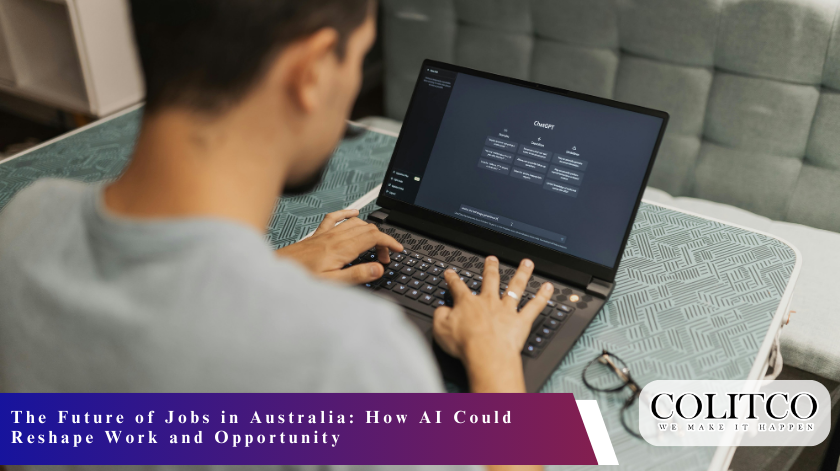Future Artificial intelligence (AI) is changing the Australian industry fast, presenting both opportunities and threats to the labour force. On the one hand, AI employment in Australia is providing new opportunities in the fields of health, finance, logistics, and technology to enhance productivity and innovation.
In the other, automation threatens to strip out low-skill and monotonous jobs, and with it, unemployment, competition, and inequality at work. The policy community, business, and labour are currently arguing how to adapt to this change, by focusing their attention on reskilling efforts, education policy, and unfair regulation to ensure that the benefits of AI are spread across the population in addition to ensuring that the risk of economic instability is maintained at minimum levels.
AI Opportunities and Threats for Workers
Artificial intelligence offers significant benefits to the Australian workforce, yet it also poses enormous potential dangers. They include potential increased productivity in much of the economy and potential economic returns.
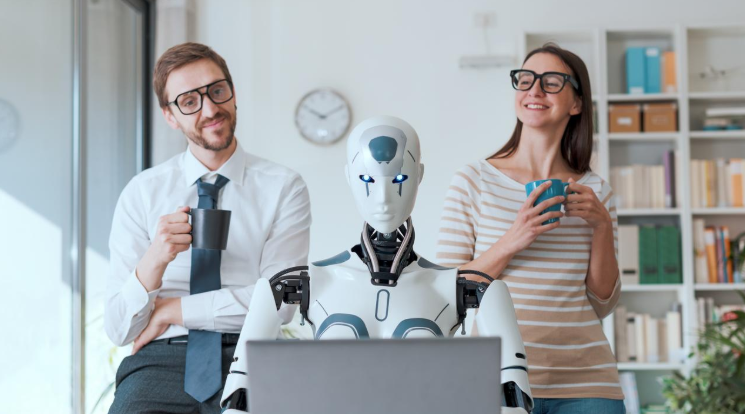
AI is reshaping jobs and opportunities in Australia.
However, these gains might be minimised if AI development happens at only a few major firms. The technology is likely to have an uneven effect on work, potentially creating new employment opportunities and destroying others. This uneven effect can increase economic inequality if some workers benefit more than others from integrating AI.
History of Technology and Job Loss
Australia’s labour market has constantly evolved with technological advancements in the past century. New employment opportunities have emerged while old ones were completely lost. Computerisation revolutionised work demands, resulting in the need for new skills while making others obsolete.
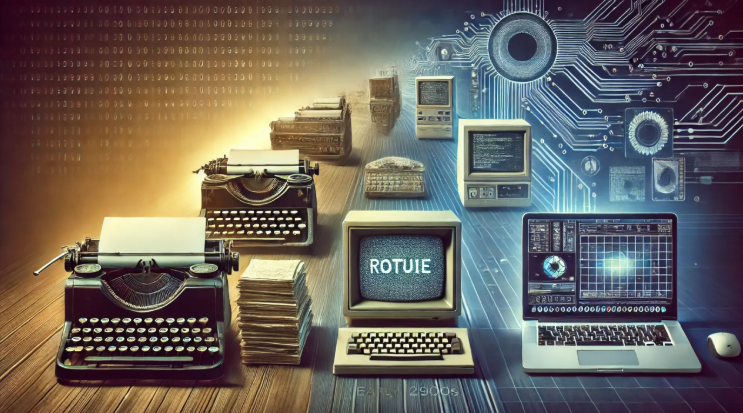
Australia’s workforce has evolved through technology shifts.
Occupations such as switchboard operators, cashiers, factory workers, and data-entry operators have declined significantly due to automation. Contemporary artificial intelligence diffusion is the latest technology to reshape traditional ways of work and relationships.
What Artificial Intelligence Means for Work.
Though there is no accepted definition, artificial intelligence generally refers to independent machine-based systems. AI systems decide or create content adaptively based on the input of a user.
In the workplace, they support routine tasks like scheduling, resource management, document creation, data analysis, and decision-making. Through this capability of handling redundant tasks lies the basis for AI’s potential value and disruption challenge.
AI and Productive Growth in Australia.
The OECD predicts that AI adoption will drive productive growth across various industries while creating new job titles. However, quantifying precise productive gains from technological advancements has proved difficult in the past.
Previous efforts at digitisation had uneven results, making it hard to precisely quantify AI’s economic benefits. Some economists forecast real GDP growth in the future, while others are cautious about immediate impacts.
AI adoption has the potential to cause waves of innovation that could boost long-term productivity growth, estimates Oxford Economics. In their estimates, they indicate that the United States could have GDP grow between 1.8% and 4% in 2032, depending on adoption rates. Australia, being a relatively small AI technology user versus AI generator, could experience around 0.17% additional GDP in the mid-2030s under these estimates.
Employee Benefits from AI in the Workplace
OECD workers’ surveys report many economic and non-economic benefits through AI implementation. Workers report increased work performance, higher satisfaction, and better physical and psychological well-being as AI reduces tedium.

Workers report higher satisfaction with AI support.
Financial and insurance professionals particularly report improved satisfaction in working with AI tools. Employers report increased productivity, lower costs, and enhanced worker safety as the principal drivers of AI implementation.
Labour economist David Autor assumes that AI would benefit workers more comprehensively than previous information technology innovations. With adequate training, AI would enable more workers to perform high-stakes decision-making tasks currently performed by the best specialists.
Such a potential transformation might restore middle-skill occupations undermined by automation and globalisation. However, this assumption is not evidenced and contradicts OECD findings about highly skilled professionals being most vulnerable to AI.
AI Job Risks and Growing Inequality.
The OECD identifies some of the risks associated with AI adoption, which include risks of market concentration and growing inequality. Where the majority of AI innovation derives from a few large firms, broader economic benefits may not accrue in full.
Poorly resourced organisations can struggle to respond to AI, hence being subject to competitive disadvantages. Geopolitically, high-investing countries like the United States and China can derive disproportionate benefits compared to low-resourced economies.
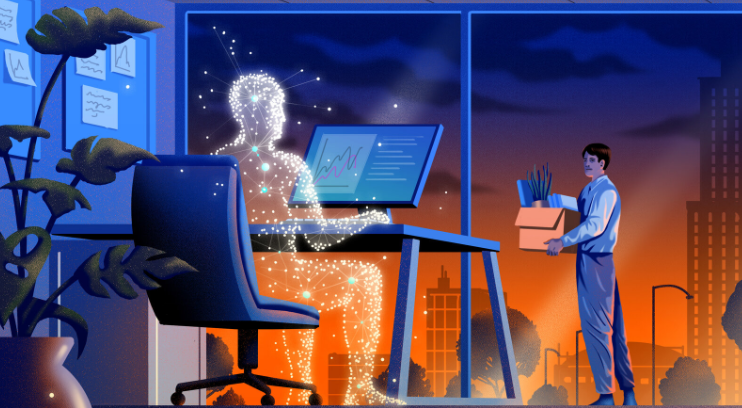
AI may widen income gaps in the workforce.
AI could speed up existing job losses through automation, potentially further widening income and wealth disparities. The most skilled employees with AI-driven productivity gains might experience larger wage gains, in turn increasing economic gaps.
Generative AI could automate work representing 30% of US economy hours worked, a 2023 McKinsey report found. Low-wage workers in the same model were demonstrated fourteen times more likely to lose employment compared to higher-wage counterparts.
Impact of AI on Australia’s Key Sectors
The OECD mentions several industries that will likely experience a significant AI impact. Transport is likely to see autonomous vehicle evolution, while agriculture may simplify harvesting with monitoring networks. Finance may utilise AI in credit ratings, fraud detection, and algorithmic trading.
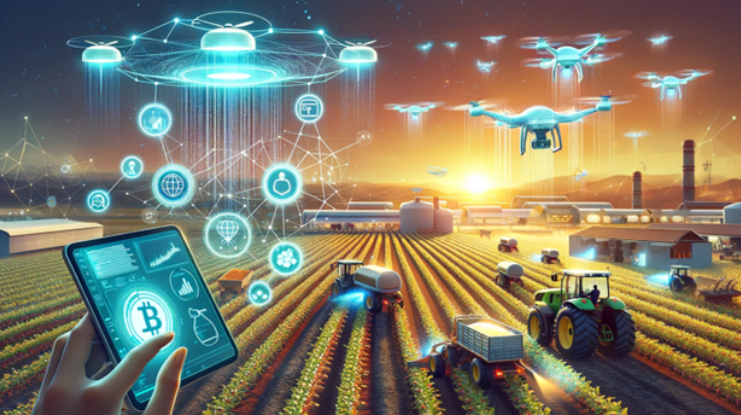
AI is transforming healthcare, transport, and finance.
Marketing and advertising can tailor consumer demands with more accuracy by means of AI analysis. Scientific research may benefit from AI-robotics convergence, accelerating discoveries. Medical care can lead to earlier disease detection and better treatment development through the services of AI applications.
Jobs Most Vulnerable to AI Automation
OECD activity across 22 nations employed occupational AI exposure ratings by means of skills correspondence tests. Professional employees and managers exhibited the highest exposure levels, with high AI exposure correlating well with levels of education.
High exposure, however, does not necessarily guarantee negative effects—AI may simply change task character without causing job displacement or income impacts. During 2012-2022, employment growth actually proved strongest in high-AI-exposure occupations.
Australian evidence also reflects analogous trends, with science, engineering, ICT professionals, chief executives, and managers being most exposed to AI. These are mostly male employees of working ages between 30 and 54 years.
Males also account for most of the least-exposed jobs, such as farming, forestry, and labouring ranks. Younger employees aged between 15 and 29 years hold greater proportions in low-skill, low-exposure jobs, often paired with education.
Reskilling the Workforce for AI Jobs
OECD analysis from LinkedIn data measured member country penetration of AI skills. Australia recorded 0.98, short of the OECD average of 1.0, at rank 15 among 36 countries. Australian females showed especially poor AI skills, with a penetration of 0.37, ranking 18th among 30 OECD countries for which information was available.
Australian males recorded 0.92, placing 20th among surveyed countries. These relatively low penetration levels confirm the need for increased investment in AI-related training for Australian staff.
AI Investment Trends in Australia
Venture capital funding to Australian AI startups grew significantly from A$100 million in 2017 to nearly A$2.2 billion in 2021. The investment, however, nearly halved to A$906 million by 2023, aligning with global trends.
Global leaders in AI funding also experienced declines, like international corporate investment decreasing from US$337.4 billion in 2021 to US$168 billion in 2023. Increased expense in developing AI and interest rates could have brought about this pullback in investment.
Economic Impact of AI on Employment
More recent modelling suggests significant workforce effects from AI take-up. The Social Policy Group estimates that Australian jobs are at risk of 21.8% to 33.2% of employees under certain conditions.
Even a conservative estimate of 7% of the workforce made redundant would add around 1.026 million people to unemployment queues. This would inflict considerable budget pressures, with potential JobSeeker payment expenses of around A$10 billion annually and income tax revenue losses of around A$14.2 billion.
Case Studies of AI Job Loss in Australia
Australian family life provides examples of the effects of AI job loss. One is the case of a software developer who loses his job, but his teacher wife retains hers. Their A$900,000 mortgage would occupy 72.2% of net income if paid over 30-year loan terms.

AI-driven layoffs impact Australian households
Another example is of a single administrative assistant who can no longer sustain A$380,000 mortgage repayments on the dole. Young couples who rent might have to relocate because unemployment benefits cover only a portion of Sydney rental payments.
AI and Employment Law Concerns
University of Technology Sydney Associate Professor Giuseppe Carabetta notes that AI implementation already affects various service industries. The shift is “new outsourcing”, affecting work from massage therapists’ administrative assistants to big retailers’ phone customer call centres.
Employment law generally provides for redundancies when work no longer exists, but unions demand the right of employees to be consulted on AI implementation. Policy measures could help worker transition and upskilling schemes.
Real Life Examples of AI Replacing Jobs
Current examples reveal the real effect of AI on employees. One clinic in Sydney replaced four receptionists with four AI systems four days before Christmas. The AI handles phone calls, and human interaction is only in idle moments.
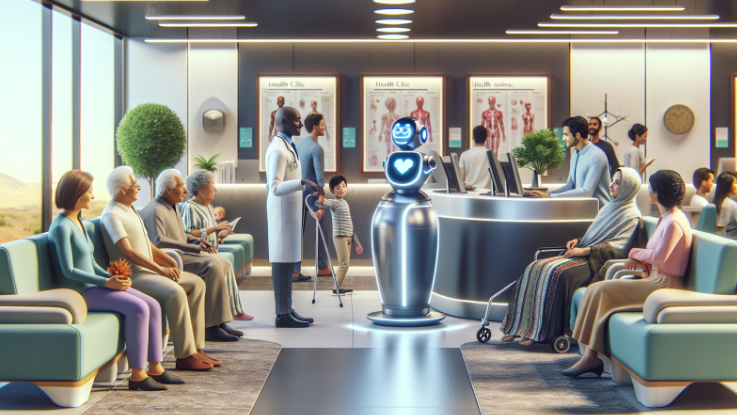
Clinics replace receptionists with AI systems.
Workers were queried if they would help in applying the replacement technology as part of the dismissal process. Such events reveal how AI implementation already affects Australian employment in various industries.
Jobs and Skills Australia AI Report:
Jobs and Skills Australia’s comprehensive report states that AI is likely to reshape rather than displace most of the work. The workforce is only 4% with high automation exposure jobs, while 79% are with low automation but medium-to-high augmentation exposure.
Routine administrative occupations like general clerks, receptionists, accounting clerks, and bookkeepers have the highest automation risk. Knowledge-intensive occupations like managers, engineers, healthcare professionals, and teachers have the highest augmentation exposure.
Projected Gains and Losses in Employment to 2050
JSA projections predict the largest losses in employment in 2050 among general clerks, receptionists, accounting clerks, bookkeepers, sales and marketing professionals, and programmers.
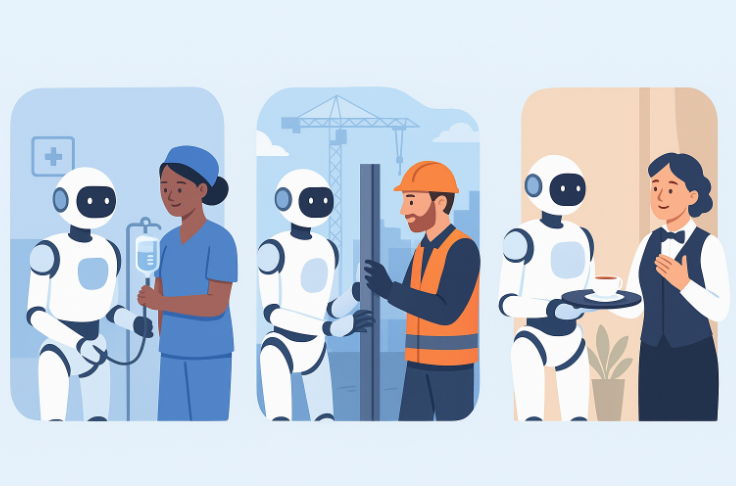
AI may cut clerical jobs but raise demand in care.
Largest employment gains would possibly be anticipated for cleaners, laundry workers, nurses, midwives, business administration managers, construction and mining labourers, and hospitality workers. Such expectations pinpoint how employment involving physical presence and human contact is less likely to be automated by AI.
Timeline of AI Adoption in Australia
JSA foresees modest jobs growth in the 2030s as the labour market makes its transition to AI adoption, before gaining pace in the 2040s. The success in realising labour-augmenting effects would largely depend on the quality of AI implementation.
Early signals are that low-skilled work may transition from performing mundane tasks to oversight of AI-generated outcomes. Specialised training and sectoral collaboration are required to help all workers benefit from the AI transition.
AI Workforce Forecasts from Experts:
Technology leaders offer diverse views regarding the impact of AI on work. Microsoft CEO Satya Nadella believes AI will redefine work and maintain the need for human oversight. Others like RethinkX research director Adam Dorr warn that AI could make most human labour obsolete by 2045.
Geoffrey Hinton suggests “mundane intellectual labour” is most vulnerable, and this could see ten workers’ output being achieved by one worker. Amazon CEO Andy Jassy believes AI would create new occupations in robotics, and Bill Gates highlights AI’s ability to tackle teacher and doctor shortages.
McKinsey Report on AI Automation
McKinsey’s latest automation review reveals strong capability growth. In its 2019 estimate, 44% of Australian work hours were found to be automatable using existing technology. The 2023 review estimated 62% automation potential using existing technology, which might jump to 79-98% in 2030.
Once adoption resistance is factored in, midpoint scenarios propose some 25% of work hours could be automated by 2030, eight percentage points ahead of earlier estimates.
AI Skills and World Wage Premiums.
Current data reveal that AI-capable labourers achieve high wage premiums across the globe. The workers achieved an average of 56% higher earnings in 2024, two times more than last year’s 25% premium.
Australian data confirm 10% job growth in AI-exposed occupations, though slower growth rates for less-exposed jobs. The most-exposed sectors achieved threefold revenue per employee growth (27%) compared to the least-exposed sectors (9%).
Australia’s Rising Demand for AI Skills.
Australian employers increasingly seek AI skills from various sectors. Information and communications industries, and financial and insurance services lead the growth in demand. Just 2,000 jobs required AI skills in 2012, compared with 23,000 in 2024.
Evidencing corresponding real productivity outcomes of business AI adoption, this rising demand is accompanied by all industries.
Also Read: Living Smarter with ChatGPT in Australia: A Practical Guide to Boosting Work, Study & Productivity
Future Directions: AI and Workforce Change.
The Australian employment landscape is poised for dramatic transformation with AI adoption over the next couple of years. Although projections vary widely, even the most conservative predictions point to widespread job displacement potentially affecting hundreds of thousands of employees.

Australia’s AI future depends on regulation and skills.
The technology will certainly generate new opportunities in addition to displacing some jobs, particularly those involving repetitive work. Proper management of the transition will entail concerted actions from the government, schools, employers, and employees.
Preparation through policy planning and skills development has the potential to minimise negative impacts while maximising beneficial impacts through the adoption of artificial intelligence.
Frequently Asked Questions (FAQs)
- Will AI replace jobs in Australia?
AI is expected to automate some routine tasks, but most experts agree it will also create new jobs in technology, health, and advanced services. - Which jobs are most at risk from AI?
Roles in transport, retail, administration, and manufacturing are most exposed, while creative, leadership, and technical jobs are less likely to be replaced. - How many Australian workers could be affected by AI?
Reports suggest up to 3.5 million Australians may need to transition to new roles by 2030 due to automation. - What sectors in Australia will benefit from AI?
Healthcare, engineering, IT, and green technologies are expected to see growth as AI supports innovation and efficiency. - How is the Australian government responding to AI?
The government is investing in digital skills programs and AI research to prepare the workforce for future changes. - Will AI improve productivity in Australia?
Yes. AI can streamline workflows, cut costs, and boost efficiency across industries, leading to higher national productivity. - What does AI mean for young workers in Australia?
Younger workers may face more disruption but also have greater opportunities if they upskill in areas like coding, data, and digital design. - How can Australians prepare for AI changes?
Upskilling, learning digital tools, and focusing on creative and problem-solving skills will help workers remain competitive. - Is AI a threat to wages in Australia?
Some low-skilled jobs may face downward wage pressure, but skilled AI-related roles are expected to offer higher salaries. - Will migration affect AI-driven jobs in Australia?
Yes. Skilled migration will remain important as Australia seeks experts in AI, data science, and emerging technologies. - Are there laws regulating AI in Australia?
Yes. Australia has introduced policies addressing ethics, bias, and the responsible use of AI across industries. - Can small businesses in Australia use AI?
Absolutely. AI tools can help small businesses with marketing, customer service, and automation at affordable costs. - What skills will be most valuable in the AI era?
Digital literacy, data analysis, critical thinking, and adaptability will be highly valued across the workforce. - How will AI affect education in Australia?
Schools and universities are beginning to integrate AI into teaching, preparing students for future careers in a digital economy. - What is the long-term outlook for AI jobs in Australia?
AI will transform work rather than eliminate it, with the future depending on how well Australia balances innovation with social equity.

